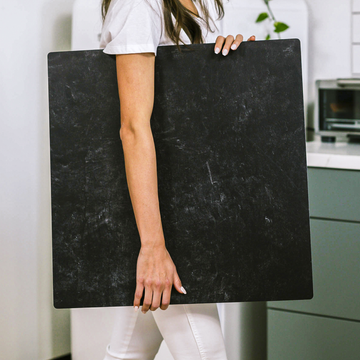Marble backdrops have become a signature look in modern food photography. But their magic goes way beyond just being "pretty." There's a world of optical secrets, lighting tricks, and color nuances beneath that iconic surface-something most guides never tell you about. In this post, we'll reveal what really sets marble apart, both natural and replica, and how you can harness its hidden properties to create showstopping images.
What Makes Marble Backdrops So Special?
Most surfaces-like vinyl or simple paper-act as passive backgrounds. Marble, however, is a game-changer thanks to its complex relationship with light. If you’ve ever wondered why food seems to practically glow and “pop” on marble, the answer lies in the science beneath the surface.
Subsurface Scattering: The Marble Glow
Natural marble has a property called subsurface scattering. Light doesn’t just bounce off-it actually penetrates slightly into the stone, then diffuses back out. This softens shadow edges and bathes food in gentle, appealing light. No extra gear needed; marble brings its own brand of radiance to every shot.
Unique Reflections and Veining
Marble is a fascinating blend of matte and shiny areas. Mineral veins reflect light differently from the surrounding stone, adding micro-textures and delicate highlights that flat backgrounds simply can’t replicate. Especially when you light from the side, these veins throw micro-shadows, injecting dimensionality into your scene.
- Specular Reflection: Those tiny, mirror-like highlights make food look glossy and appetizing.
- Diffuse Reflection: Matte patches scatter light, preventing harsh shine.
- Veining: Natural or realistic replica marble introduces fine details and an organic feel.
Color Science: Shaping the Mood of Your Food
Not all marble is pure white. Subtle blue, gold, or green undertones in the veins add unique color casts. Talented food photographers use these undertones to complement or contrast with the dish, influencing how viewers feel about the image.
If you want perfectly neutral backgrounds for eCommerce or print, remember: marble's mineral makeup can shift your white balance. For the most color-accurate results, calibrate your camera settings for each piece or shoot to offset these subtle hues.
Marble as an Unseen Light Modifier
Here’s a secret: marble naturally bounces light back onto your subject. Place your key light at a slight angle and the stone will reflect soft, flattering fill light onto the food-especially useful with glossy ingredients such as sauces or glazes.
However, that glossy sheen is a double-edged sword. Strong, direct lighting can cause glare or distracting hotspots. To manage this, use a large diffuser or a circular polarizer. Adjust the light angle and watch how the reflections change until you find the perfect balance.
Comparing Real and Replica Marble Surfaces
Modern replica surfaces closely mimic the look of real marble, but they do behave differently under the camera. Here’s a quick rundown:
-
Natural Marble:
- Features unique, unrepeatable patterns
- Provides true subsurface scattering for luminous shadows
- Might introduce unpredictable color casts
-
Replica Marble:
- Delivers consistency from shot to shot
- Offers more control over gloss and pattern
- Shadows are a touch crisper, with less depth in highlights
Advanced Techniques for Marble Backdrops
- Use a Polarizing Filter: Screw a circular polarizer onto your lens and rotate it while looking through the viewfinder. You’ll see reflections fade or intensify. Adjust until the marble’s veining and texture look their richest.
- Try Focus Stacking: Because marble surfaces often have tiny grooves and texture, shallow depth of field can make parts of your image unsharp. By focus stacking-taking several shots at different focus points and blending them-you get both the dish and the marble surface crisp and detailed.
Make Marble Your Creative Partner
Think of marble backdrops not as mere supporting actors, but as collaborators in your creative process. When you understand how marble shapes light, color, and texture, you gain a powerful new tool in your food photography kit.
Pay attention to your light’s direction, watch how subtle surface tones interact with your subject, and use the marble’s texture to add a dimension that plain surfaces simply can’t deliver. These small details can transform “nice” photography into images that stop the scroll and tell a richer story.
Have questions or want a side-by-side demonstration of natural vs. replica marble surfaces? Leave a comment below, and let’s dive even deeper into the world of expert food photography surfaces!



